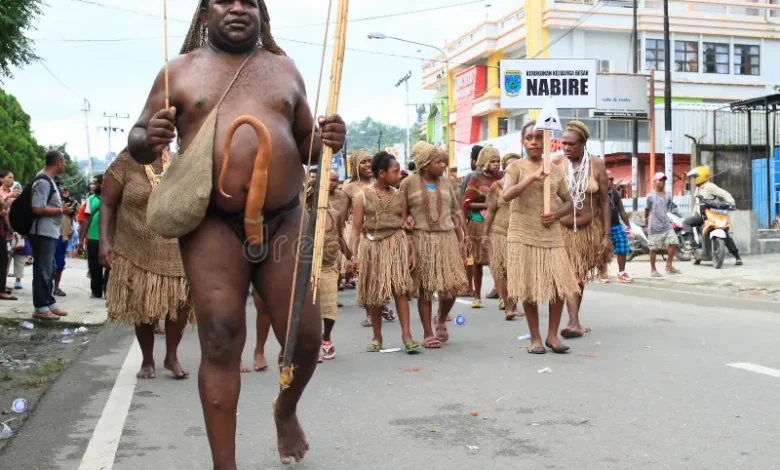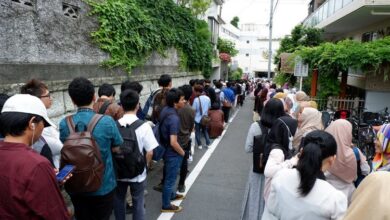
Ali Syarief
CEO Cross Culture Institute and Country Representative LEX HIPPO Family Club Japan
Abstract
Globalization has brought diverse impacts on local cultures in Indonesia. Bali, since 1975, has experienced a surge of international tourism that strengthened and crystallized its cultural identity. In contrast, Papua’s interaction with the outside world through modernization and religious missions has triggered significant transformation, leading to the abandonment of many traditional practices. This paper compares these two cases through a literature review, emphasizing how globalization, power relations, and the role of the state shape the trajectory of local culture. The findings suggest that globalization is asymmetrical: it can reinforce identity (Bali) or erode traditions (Papua), depending on cultural capital, social construction, and political-economic interests.
Keywords: globalization, tourism, local culture, Bali, Papua, cultural transformation
Introduction
Globalization is a multidimensional phenomenon that connects societies worldwide through flows of information, goods, capital, people, and ideas. Indonesia, with its thousands of ethnic groups, has experienced diverse impacts of globalization across its regions. Bali and Papua represent two contrasting responses to global interactions.
Since 1975, Bali has become known as a “world tourism island,” with international tourism flourishing and local culture gaining strength through cultural commodification. Conversely, Papua, often perceived as “primitive” by outsiders, underwent drastic cultural change through modernization, missionary work, and interaction with external actors. This study aims to compare both cases to understand the patterns of interaction between globalization and local cultures.
Methodology
This study employs a literature review approach by examining works in anthropology, sociology, and tourism studies. Sources include key works such as Clifford Geertz (1973), Michel Picard (1996), Koentjaraningrat (1994), and more recent studies on Papua and Bali. The analysis applies a qualitative comparative approach to identify patterns of cultural transformation.
Discussion
Bali: Cultural Reification in the Era of Globalization
Bali demonstrates how globalization can reinforce local culture. Through international tourism, Balinese culture—including Hindu rituals, traditional dances, temple architecture, and the Tri Hita Karana philosophy—has become a central attraction. According to Picard (1996), Bali experienced “cultural reification,” in which culture is preserved and strengthened because it carries economic value.
However, this process is not without consequences. Geertz (1973) observed that religious rituals were often transformed into tourist performances, raising questions of authenticity. Nevertheless, Balinese society managed to transform culture into both an economic asset and a spiritual identity.
Papua: Cultural Transformation under External Pressure
Papua presents a contrasting dynamic. Prior to intensive interaction with the outside world, Papuans practiced a traditional lifestyle: wearing koteka, hunting and gathering, and relying on tubers as staple food (Koentjaraningrat, 1994).
The arrival of Christianity, modernization, and government development programs accelerated cultural change. Ballard (2002) noted that Papuans abandoned much of their traditional culture due to external pressure, both from religious norms and political regulations. This phenomenon can be categorized as acculturation under pressure, in which local culture weakens under the dominance of an external culture considered superior. Unlike Bali, where commodification ensured survival, Papuan traditions largely eroded.
Comparing Bali and Papua
The different responses of Bali and Papua can be explained by three main factors:
- Cultural Capital – Balinese culture was easily marketable as “exotic” to international tourism. Papuan culture lacked similar leverage due to external perceptions of primitiveness.
- Role of the State – The Indonesian government strongly supported Bali’s tourism as a source of foreign revenue (Hitchcock & Darma Putra, 2007). In contrast, Papua was framed mainly as a resource-extraction region, not a cultural one.
- Power Relations – Balinese culture was given room to flourish, whereas Papuan traditions faced political and social pressure that undermined their survival.
Conclusion
Globalization produces divergent impacts on local cultures. Bali illustrates how globalization can reinforce cultural identity through reification and commodification, while Papua shows how local traditions can be eroded under modernization and external pressure.
This comparative study underscores that globalization is not neutral. It operates within frameworks of power relations and political-economic interests that shape cultural change. Therefore, Indonesia must design cultural policies that not only protect heritage but also empower communities to sustain cultural relevance in the global era.
References
- Ballard, C. (2002). The Signature of Terror: Violence, Memory and Landscape at Freeport in Papua, Indonesia. In B. Anderson (Ed.), Violence and the State in Suharto’s Indonesia. Ithaca: Cornell University Press.
- Geertz, C. (1973). The Interpretation of Cultures. New York: Basic Books.
- Hitchcock, M., & Darma Putra, I. N. (2007). Tourism, Development and Terrorism in Bali. Aldershot: Ashgate.
- Koentjaraningrat. (1994). Kebudayaan, Mentalitet dan Pembangunan. Jakarta: Gramedia.
- Picard, M. (1996). Bali: Cultural Tourism and Touristic Culture. Singapore: Archipelago Press.



